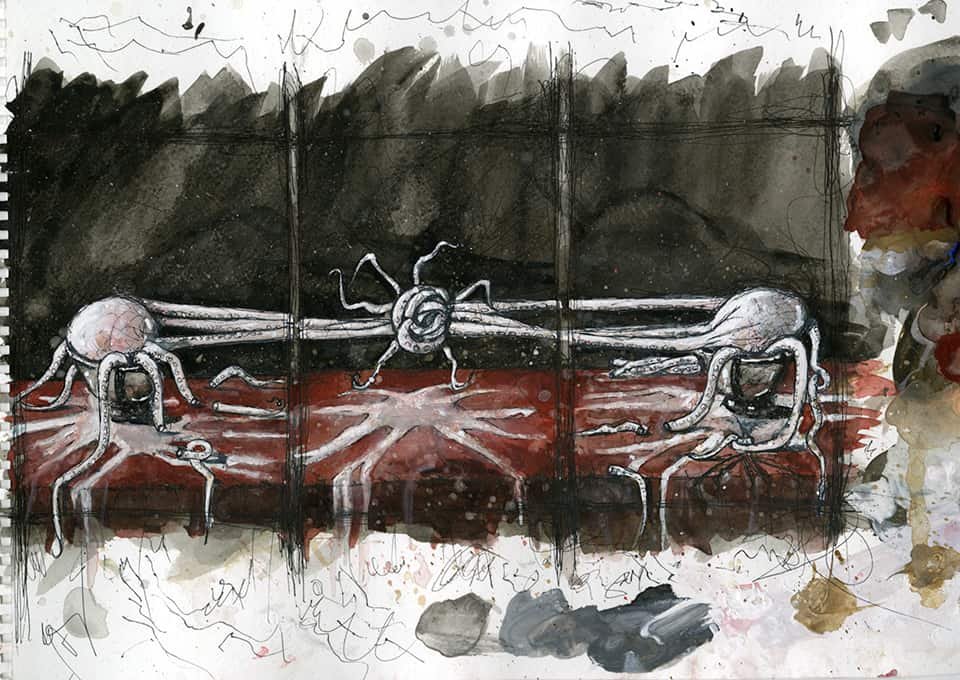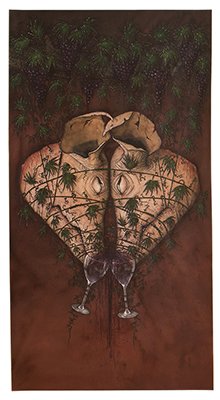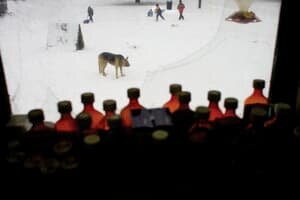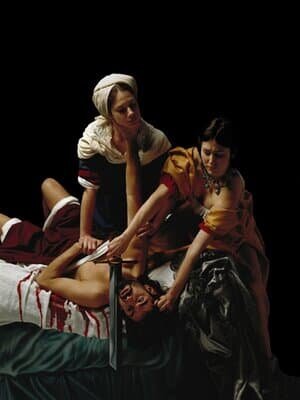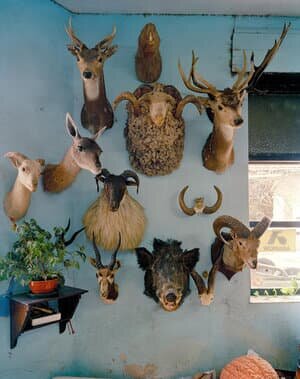About Tara Sellios
Contemporary artist Tara Sellios creates artworks that are elegant and carnal, gripping and grotesque. Her work commands attention: it is both siren song and hymn. Sellios seeks to express the totality of existence – to summarize mortal vitality in a single field of view. Sellios’ works reminds us that the state of being we enjoy is temporary and cyclical. Every single moment is fleeting- urgent- throbbing like a heart beating as a drum, or at least it should be, or it is already over. Indeed, for the artist the essence of this trajectory is compressed into the artwork she makes- life to death, from death springs life. This is the essential script told with both a sense of stillness and frenzy.
Tara Sellios’ works began directly, aligning with subjects we encounter in traditional still life paintings- limp small game animals, shellfish piled high, and bloody cuts of meat on linen cloth. The work from early Lessons of Impermanence and Impulses immediately recall the work of the Dutch still life painters. They are lush in color, washed in shadows, and activated by light. Early works were single frames or diptychs, but Sellios’s works have become more extended and elaborate with time. Seven Evil Thoughts are composed of a sweeping seven panels each. At this point, we are aware of Sellios’ interest in themes and connotations borrowed from religious texts and paintings, and are certain of her established symbolic language too- recurring subjects such as overflowing wineglasses, spoiling food, and spatters of blood reveal something more visceral and indulgent than sustaining is unfolding. Luxuria feels like the ambition of excess was the display of wealth. In Invernalis an over-ripened opulence has gone to rot for the sake of pompousness. By The Seven Woes death has begun to consume itself. The shifts in works seem to symbolically shadow a socio-cultural climate of uncertainty and elitism. When the Museum of Fine Arts Boston acquired Untitled No. 3 from Impulses in 2020, for example, it seemed as if the cannon acknowledged the harmonizing power of Sellios’ work with contemporary context.
Tara Sellios is most recognized for her photographic artworks; she also sketches with watercolor and draws in graphite on cotton paper. These works tend to have more impulse, while the photographs are the most heavily cultivated objects of her creative output. All of Sellios’ photographs begin as gestural watercolor drawing studies. Tara Sellios’ photographic artworks are meticulously staged and are composed of elements that have taken as long as a year to source. The necessary elements are arranged after the vision in the sketch before finally being photographed with a large format camera. While the early sketches have ferocious immediacy, the final panels are more detailed and elaborate.
Tara Sellios work has continued to evolve. Recently, she has chosen to break the rectangular frame of the photograph. This choice renders her artwork both more intense and complex. It also more blatantly aligns with the spirit of her influences. The round Oculus series, some shown below, seems a contentious bridge- expanding connections from to the human to omnipotent.
Now, more elaborate multi-panel photographic works composed with irregular shaped panels are come together, taking shape of altars. As example, Untitled (The Wine Harvesting Sickle) included in You and Yours exhibition proved to be the first of a larger work. A second sickle was made a few months thereafter in time for our Time in two directions | 10 Year Anniversary Show, followed by three more panels the “three lovers,” that draws out gestures from a work by Antonello. The larger work remains in progress. While the Artist is willing to pair-down segments for private collections, the pinnacle presentation for these photographs is the whole altar. This choice indulges the referents, where fragments speak alone but together to form an oeuvre that is more nuanced. While Sellios’ inspiration always sprung from such sources as specific biblical passages, gestures from religious paintings, panels, or stained-glass windows, they now undeniably impact our own interpretations. Sellios is engaging the scaffolding of the established traditions of still life/nature mort and religious genres with the context of her own language of impermanence. Tara Sellios makes more than a contemporary contribution to the genres or a modernizing of the methods, but a step forward for the power of the allegorical. Life is eternal, we are not.















